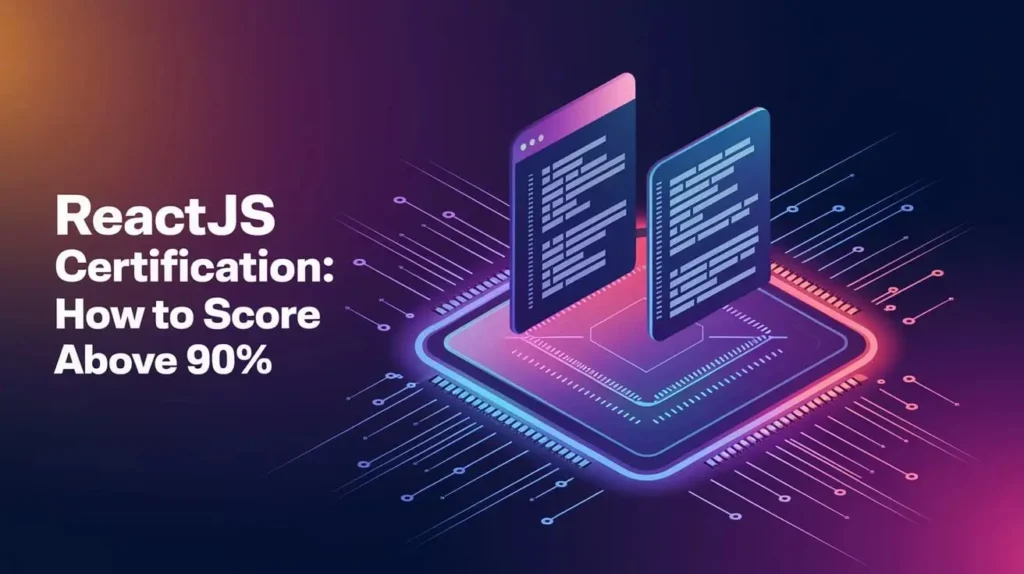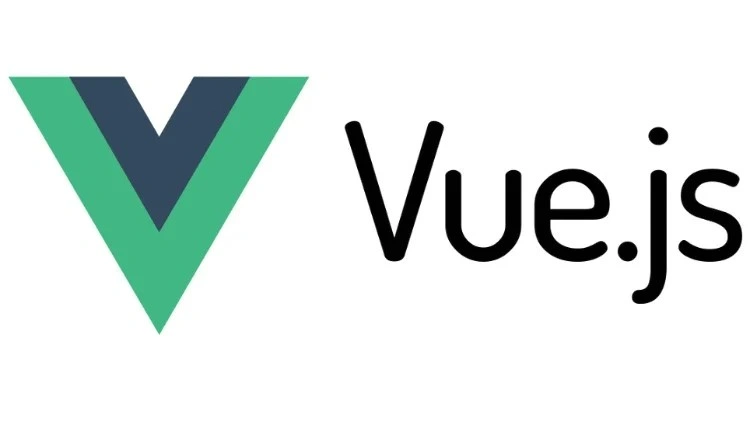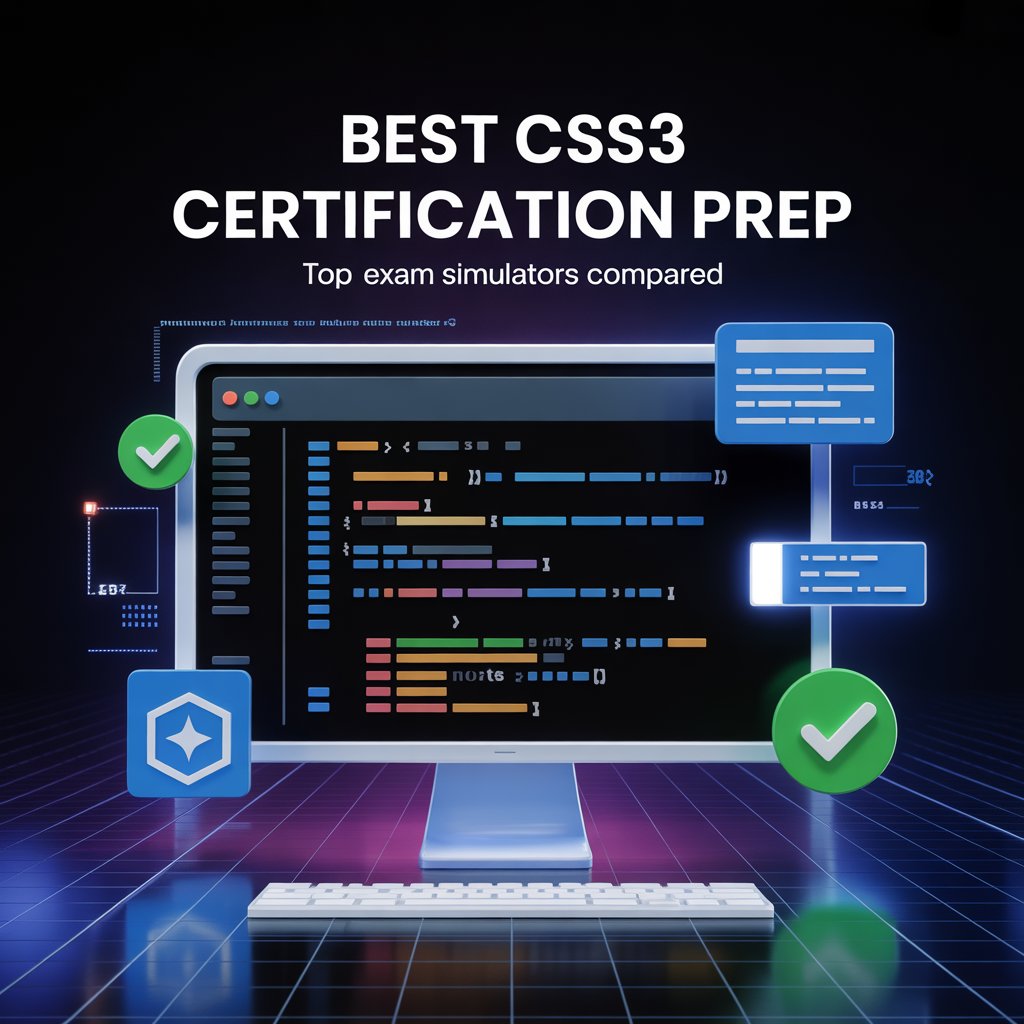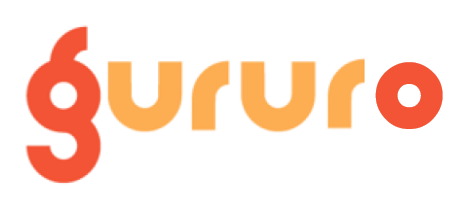Introduction
Picture this: Your palms are sweaty, but you’re ready. You’ve spent weeks coding components, wrestling with hooks, and debugging state issues. You’re not just here to pass—you’re aiming for that shiny 90%+ score. Sounds like a tall order? Nah, it’s totally doable. With a solid plan, some grit, and a few insider tips, you can crush this exam and show the world you’re a React rockstar.
I’m here to walk you through every step of the React.js certification guide, sharing my own stumbles and triumphs along the way. From a 6-week study plan to practical hacks, this guide is packed with everything you need to score 90% in React.js certification. Let’s roll up our sleeves and get started.
Why Go Big with a 90%+ Score?
React.js isn’t just another library—it’s the backbone of apps like Instagram and Dropbox, powering over 40% of modern web interfaces. A certification proves you can build slick, scalable UIs, but a 90%+ score? That’s your ticket to standing out. Here’s why it’s worth the hustle:
Job Magnet: A stellar score grabs recruiters’ attention for roles like Front-End Developer.
Skill Cred: It shows you’ve got React’s quirks, from JSX to Redux, locked down.
Confidence Kick: Nailing the exam gives you the swagger to tackle real projects.
But here’s the deal: React.js certifications aren’t a walk in the park. They test everything from basic props to tricky stuff like Concurrent Rendering. To score 90% in React.js certification, you need a game plan. Let’s dive into it.
What’s the React.js Certification Exam Like?
Before we map out how to prepare for React.js certification, let’s peek under the hood. Most React.js exams (think Udemy, Coursera, or professional certs) cover:
Basics: JSX, components, props, and state.
Advanced Stuff: Hooks, Redux, React Router, and context API.
Performance Tricks: Lazy loading, memoization, and code splitting.
Clean Code: Lifecycle methods, error boundaries, and accessibility.
Hands-On: Coding tasks or debugging challenges.
You’ll face multiple-choice questions, code snippets to fix, and sometimes a mini-app to build. Hitting 90% means nailing both the “why” and the “how.” Here’s how to make it happen.
Step 1: Your 6-Week Study Plan
A clear plan is like a good component—simple, reusable, and effective. This 6-week React.js certification study plan is built for busy folks chasing that 90%+ score. Tweak it if you’re already comfy with React basics.
Weeks 1-2: Get the Basics Down
What’s the Goal? Build a rock-solid foundation.
What to Study: JSX, functional vs. class components, props, state, and event handling.
What to Do:
Watch beginner-friendly React videos on YouTube. Channels like Traversy Media or freeCodeCamp are gold.
Code 3-5 mini-projects, like a to-do list or a weather app, to lock in concepts.
Try React.js certification practice tests on Gururo to see where you stand.
My Tip: Jot down a quick “cheat sheet” for JSX rules and component patterns. Glance at it every morning.
My Story: I once spent a whole evening debugging a component that wouldn’t show up. Spoiler: I forgot to return the JSX. Total facepalm. That’s why drilling basics is non-negotiable.
Weeks 3-4: Tackle the Tough Stuff
What’s the Goal? Master hooks, state management, and routing.
What to Study: useState, useEffect, useContext, Redux, React Router, and custom hooks.
What to Do:
Build a small app with multiple pages, like a blog, to get comfy with React Router.
Play with Redux by coding a shopping cart that saves state.
Take Gururo’s advanced quizzes to test your hook and context skills.
Sneaky Hack: Write a custom hook for something practical, like fetching data from an API. Exams love throwing these at you.
Cool Tidbit: Did you know hooks were added to React in 2018 to simplify state and lifecycle logic? They’re now the heart of most React apps.
Week 5: Polish Performance and Code Quality
What’s the Goal? Learn to make apps fast and user-friendly.
What to Study: Memoization, lazy loading, code splitting, error boundaries, and accessibility (a11y).
What to Do:
Tweak a sample app to use React.memo and useCallback for speed.
Read up on WCAG guidelines to make your components accessible.
Solve 10-15 React coding challenges on LeetCode or HackerRank. Nail questions like, “How do you stop extra re-renders?”
My Tip: Practice under time pressure to mimic exam vibes.
Week 6: Test and Tweak
What’s the Goal? Build confidence and plug knowledge gaps.
What to Do:
Take full-length mock exams on Gururo or similar platforms.
Revisit tricky topics, like Redux middleware or Suspense.
Debug 5 complex React apps to sharpen your problem-solving.
Mindset Trick: Picture yourself breezing through the exam. A calm mind works wonders.
Step 2: Grab the Best Resources for React.js Certification
Your study tools can make or break your prep. Here’s my go-to list for the best resources for React.js certification:
React Docs: The official React website is your bible. Pin the Hooks and Concurrent Rendering pages.
Gururo: Their React.js certification practice tests are super close to the real deal, especially for scenario-based questions.
Books:
Learning React by Alex Banks and Eve Porcello: Takes you from newbie to pro.
React Design Patterns and Best Practices by Michele Bertoli: Great for clean code and optimization.
Courses:
Coursera’s Front-End Web Development with React: Structured and thorough.
Communities: Hang out on Reactiflux (Discord) or r/reactjs on Reddit to swap tips.
My Advice: Don’t just watch or read—code as you go. Build at least one project per resource to make the knowledge stick.
Step 3: Nail the Coding Challenges
Exams love throwing coding tasks at you, like building a component or fixing a bug. Here’s how to shine:
Code Every Day: Use CodeSandbox or Repl.it to whip up quick React apps.
Typical Tasks:
Build a counter using useState and useEffect.
Create a form with controlled inputs.
Code a search filter with useReducer.
Debug Like a Pro: Practice spotting mistakes, like missing list keys or wrong prop types.
Time It: Solve problems in 10-15 minutes to get used to exam pressure.
Real Talk: My friend Jake bombed his first coding task because he overthought it. He started practicing one challenge daily on CodePen, focusing on hooks. By exam day, he built a slick app in 18 minutes and scored 94%.
Step 4: Crush Multiple-Choice Questions
Multiple-choice questions test your brain’s React trivia. Here’s how to ace them:
Know the “Why”: Don’t just memorize—understand why useEffect runs after render or why Redux handles global state.
Use Memory Tricks: For lifecycle methods, think “MUR” (Mount, Update, Unmount).
Rule Out Duds: If a question’s about useEffect cleanup, skip options that don’t mention side effects.
Practice: Gururo’s React quizzes are a lifesaver for MCQ prep.
Cheeky Quote: “Good code is like a good joke: it doesn’t need explaining.” – Unknown. Same goes for MCQs—get the concept, and the answer’s obvious.
Step 5: Rock Exam Day
All your prep comes down to this. Here’s how to nail it:
Night Before:
Skim your cheat sheet and key topics (hooks, Redux flow).
Get 7-8 hours of sleep. A foggy brain is your worst enemy.
During the Exam:
Scan the whole test to tackle easy questions first.
For coding tasks, jot down a quick plan before diving in.
Double-check MCQs for sneaky wording.
Stay Chill: If you’re stuck, take a deep breath and move on. Come back later.
My Story: During my cert exam, I hit a wall on a Redux question. I skipped it, finished the rest, and came back with fresh eyes to nail it. Trust your process.
Watch Out for These Traps
Even sharp coders can slip up. Avoid these:
Skipping Hooks: Hooks are React’s bread and butter. Know useState, useEffect, and useContext inside out.
Forgetting Accessibility: Exams often test a11y. Brush up on ARIA roles and semantic HTML.
Overcomplicating: Keep coding answers clean and simple.
Ditching Practice Tests: Mock exams show your weak spots. Gururo’s tests are clutch.
Additional Resources
Books:
- Road to React by Robin Wieruch: Hands-on and practical.
- Fullstack React by Anthony Accomazzo: Deep dives into real apps.
Tools:
- CodeSandbox: Perfect for quick React experiments.
- ESLint: Keeps your React code clean.
Websites:
- Gururo: Awesome for React.js certification practice tests.
- React.dev: The go-to for official docs and tutorials.
Communities:
- Reactiflux (Discord): Chat with React devs.
- Stack Overflow: Find answers to React questions.
Wrapping Up: Your 90%+ Awaits
Hitting 90%+ on your React.js certification isn’t just a dream—it’s a plan. With a 6-week React.js certification study plan, killer resources like Gururo, and a mix of coding and theory prep, you’ll stride into that exam ready to slay. This isn’t about scraping by; it’s about proving you’re a React pro.
So, fire up your code editor, tackle a React.js certification practice test, and get to work. As a wise coder once said, “Build it one component at a time.” Your 90%+ score is waiting—go grab it.
Your Next Step: Kick things off today. Try a Gururo quiz, code a quick React app, or join a React community. The journey’s started—make it epic!
FAQs
What topics are covered in a React.js certification exam?
Most exams test JSX, components, props, state, hooks (useState, useEffect), Redux, React Router, performance optimization (e.g., memoization), and accessibility.
How long should I study to score 90% in React.js certification?
A 6-week study plan, with 10-15 hours per week, is ideal for most learners. Adjust based on your current React knowledge.
What are the best resources for React.js certification prep?
Use the official React docs, Gururo’s React.js certification practice tests, books like Learning React, and courses on Coursera or Udemy.
How can I practice coding for the React.js certification?
Build mini-projects (e.g., to-do lists, blogs) on CodeSandbox, solve challenges on LeetCode, and debug sample apps to sharpen skills
Are hooks important for the React.js certification?
Absolutely! Hooks like useState, useEffect, and useContext are central to modern React and heavily tested in exams
















